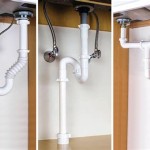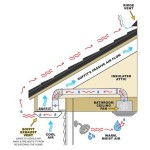How Much Does it Cost to Add a Bathroom to a House?
Adding a bathroom to a house is a significant home improvement project that can greatly enhance both the comfort and the resale value of the property. However, understanding the financial implications beforehand is crucial for effective budgeting and planning. The total cost to add a bathroom can vary widely depending on numerous factors, making it essential to conduct thorough research and obtain accurate estimates before commencing the project.
The price range for adding a bathroom can span from a modest $5,000 to upwards of $50,000 or even more, depending on the scope of the project. This large variance is due to the complexity involved, which includes plumbing, electrical work, potential structural modifications, and the selection of fixtures and finishes. A small powder room added to an existing space with accessible plumbing will generally be at the lower end of the spectrum, while a full bathroom addition requiring extensive rerouting of plumbing lines and structural changes will be significantly more expensive.
Several core cost components contribute to the overall expense of adding a bathroom. These costs can be categorized into areas such as plumbing, electrical work, materials, and labor. Each of these areas presents opportunities for cost optimization based on the individual’s priorities and the specific constraints of the property.
Plumbing Costs: Essential Infrastructure
Plumbing stands as one of the most significant expenses in adding a bathroom. The cost primarily depends on the proximity to existing plumbing lines. If the new bathroom is located adjacent to a kitchen, laundry room, or another bathroom, tapping into the existing supply lines and drainage system will be relatively straightforward and less expensive. However, if the new bathroom is located far from existing plumbing, extensive rerouting and installation of new pipes will be necessary, dramatically increasing the plumbing costs.
The installation of new supply lines for both hot and cold water is a fundamental requirement. Pipes must be sized appropriately to provide adequate water pressure to all fixtures. Similarly, proper drainage is essential to prevent backups and ensure efficient waste removal. This typically involves connecting the new bathroom to the main sewer line or septic system. Depending on local building codes and the existing plumbing configuration, this may require breaking through concrete slabs or foundation walls, adding to the complexity and cost.
In addition to the main supply and drain lines, plumbing costs also include the installation of individual fixture connections. Each toilet, sink, shower, and bathtub requires specific plumbing connections for both water supply and drainage. The type of fixtures chosen can also influence the plumbing costs. For example, a freestanding soaking tub may require more intricate plumbing connections compared to a standard bathtub.
Labor costs related to plumbing are variable and depend on the skill and experience of the plumber, as well as the complexity of the job. Licensed plumbers typically charge by the hour, and their rates can vary based on geographic location and demand. It is crucial to hire a qualified and licensed plumber to ensure that the plumbing work is performed correctly and complies with local building codes. Improper plumbing can lead to leaks, water damage, and other serious problems.
Obtaining multiple quotes from different plumbers is essential to comparing pricing and ensuring competitive rates. Requesting detailed breakdowns of the estimated costs, including materials and labor, can help in understanding the overall cost of the plumbing portion of the project. Consideration should also be given to the possibility of unforeseen issues arising during the plumbing work, such as encountering unexpected obstructions or damaged pipes. A contingency fund should be established to cover such contingencies.
Electrical Costs: Powering the New Space
Electrical work is another crucial aspect of adding a bathroom and involves ensuring adequate electrical supply for lighting, ventilation, and any electrical appliances such as hair dryers or electric heaters. Similar to plumbing, the cost of electrical work depends on the existing electrical system and the complexity of the new wiring needed.
The addition of a new bathroom will typically require the installation of new electrical circuits. These circuits must be appropriately sized to handle the electrical load of the various fixtures and appliances. Modern bathrooms often include multiple outlets, including Ground Fault Circuit Interrupter (GFCI) outlets near water sources to prevent electrical shock. GFCI outlets are mandated by building codes in wet areas and add to the overall safety of the space.
Lighting is a significant component of electrical costs. The type of lighting desired, such as recessed lighting, vanity lighting, or a combination of both, will impact the cost. The number of light fixtures and the complexity of their installation will also play a role. Furthermore, the inclusion of a ventilation fan is essential for removing moisture and preventing mold growth in the bathroom. Ventilation fans require their own dedicated electrical circuit and proper ductwork to vent the moist air to the exterior of the house.
The electrical work also includes running wiring from the existing electrical panel to the new bathroom location. This may involve breaking into walls and ceilings to route the wiring, which can add to the labor costs. The distance from the electrical panel to the new bathroom location can also influence the cost, as longer wire runs will require more materials and labor.
Hiring a licensed electrician is crucial for ensuring the safety and compliance of the electrical work. Electricians are trained to handle electrical wiring and can ensure that the wiring is properly grounded and installed according to building codes. Improper electrical work can create a fire hazard and pose a risk of electrical shock. As with plumbing, obtaining multiple quotes from different electricians is recommended to compare pricing and ensure competitive rates. Requesting a detailed breakdown of the estimated costs, including materials and labor, can help in understanding the overall cost of the electrical portion of the project.
Materials and Fixtures: Personalizing the Space
The selection of materials and fixtures represents a significant portion of the overall cost and allows for considerable personalization. The cost of materials can vary widely depending on the quality and style of the chosen items. Basic fixtures and finishes will generally be less expensive, while high-end or custom options can significantly increase the cost.
Flooring is a key material consideration. Common bathroom flooring options include tile, vinyl, and laminate. Tile is a popular choice due to its durability, water resistance, and aesthetic appeal. However, tile installation can be more labor-intensive and expensive than other flooring options. Vinyl flooring is a less expensive and easier-to-install alternative, while laminate flooring offers a good balance of cost and appearance.
Wall finishes also contribute to the overall aesthetic and cost. Paint is the most common and cost-effective wall finish. However, tile or wainscoting can add a more sophisticated look but will increase the cost. Waterproof paint is recommended for bathrooms to prevent moisture damage.
The selection of fixtures, such as the toilet, sink, shower, and bathtub, will also impact the overall cost. Toilets range in price from basic models to high-efficiency and smart toilets with advanced features. Sinks can be pedestal sinks, vanity sinks, or wall-mounted sinks, each with its own price point. Showers can be simple shower stalls or elaborate custom showers with multiple showerheads and body sprays. Bathtubs range from basic tubs to freestanding soaking tubs and whirlpool tubs.
Vanities provide storage space and can be a focal point of the bathroom. Vanities come in a variety of styles, materials, and sizes. The cost of a vanity depends on the complexity of its design and the quality of its construction. Countertops for vanities can be made from a variety of materials, including laminate, granite, quartz, and marble. The choice of countertop material will affect the cost and the overall look of the bathroom.
Hardware, such as faucets, showerheads, and towel bars, also contributes to the overall cost. These items come in a variety of styles and finishes, and the choice of hardware can significantly impact the overall aesthetic of the bathroom. Lighting fixtures, mirrors, and other decorative accessories can also add to the cost and personalize the space.
When selecting materials and fixtures, it is important to consider both the aesthetic appeal and the practical functionality of each item. Choosing durable and water-resistant materials is essential for ensuring the longevity of the bathroom. It is also important to consider the overall style of the house and select materials and fixtures that complement the existing décor.
:strip_icc()/housesprucingbathroom3-7b0fca1959964b7cbcc866ada820aba3.jpeg?strip=all)
This Is How Much It Costs To Add A Bathroom

Cost To Add A Bathroom 2024 Guide Forbes Home

How Much Does An Extra Bathroom Add To The Value Of A House Resi

What S The Average Cost To Add A Bathroom Neighborly

How Much To Add A Bathroom Cost Guide Trelora Real Estate

How Much Does It Cost To Add A Bathroom 2024 Data

How Much Value Does A Bathroom Add In 2024 Badeloft

How Much Does It Cost To Add A Bathroom Home Nj Remodeling Renovation

Cost To Add A Basement Bathroom Bright Green Door

Can You Add A Bathroom Anywhere In House Advice Information
Related Posts







